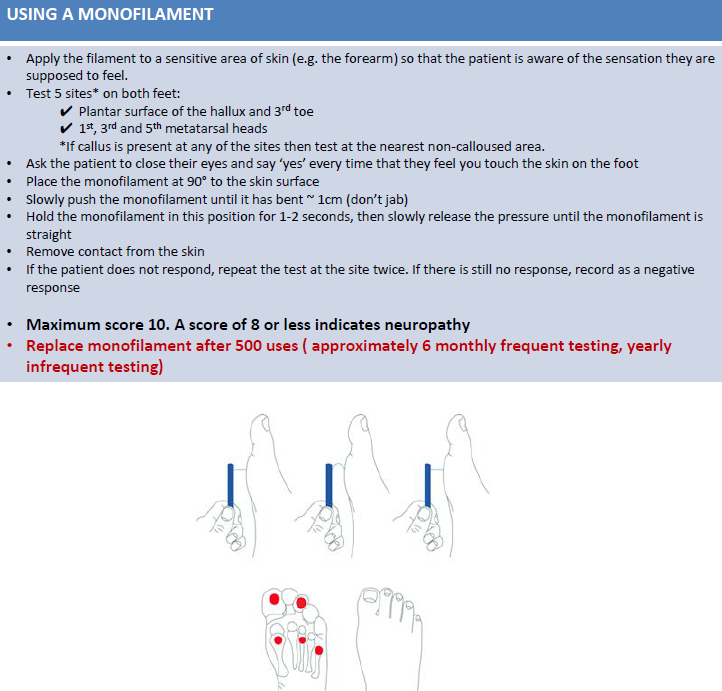testing for neuropathy in diabetes
Last edited 06/2020 and last reviewed 11/2021
The 10 g monofilament
- 10g monofilament was originally invented for testing for sensory loss in the hands of people with leprosy and was not made from nylon but horse hairs. Monofilaments are easy to use but there are some potential areas for incorrect use or misuse (1)
How to use a 10 g monofilament
Upon initial use or after rest it is best to buckle the monofilament a few times prior to applying to the person’s skin as this will remove any residual stiffness. If this is not done the monofilament will deliver more than 10 g of force.
- Explain what are you going to do and why. Then apply the monofilament to somewhere else on the person, for example the forearm, so that they can experience the sensation of the monofilament.
The technique for using a monofilament has been detailed (2):

Scoring system based on five sites on each foot = 10 sites; if score of 8 or less then indicative of neuropathy (2)
Monofilament technique notes:
- The monofilament must be placed at 90 degrees to the skin surface.
- It is applied, held and released in a controlled manner.
- It should be applied, held and released over 1–2 seconds for each test.
- When applied and held the monofilament should buckle at about 1 cm from the horizontal.
- It must not “wiggle” or slide when held in place.
Inability to detect one or more sites in each foot indicates sensory deficit and increased ulcer risk.
Reference:
- Baker N. Prevention, screening and referral of the diabetic foot in primary care. Diabetes & Primary Care 2011; 13 (4):225-34.
- The North West London Health and Care Partnership. North West London Diabetes Guidelines (Accessed 30/6/2020).